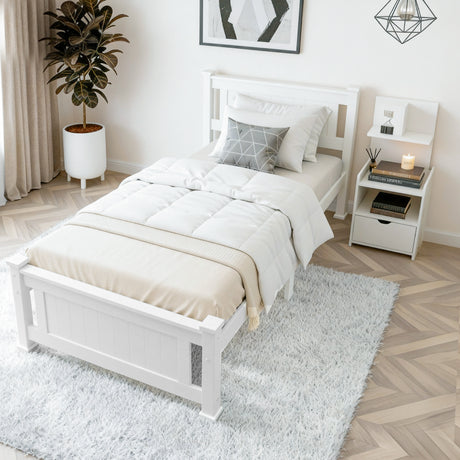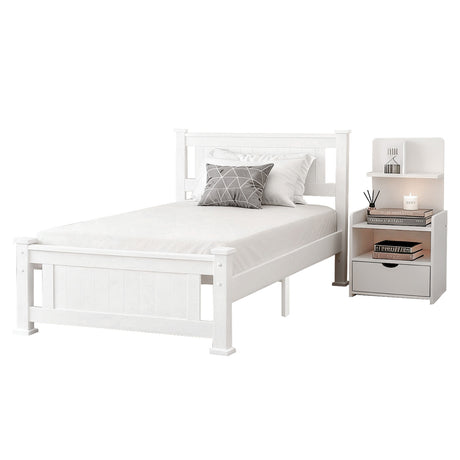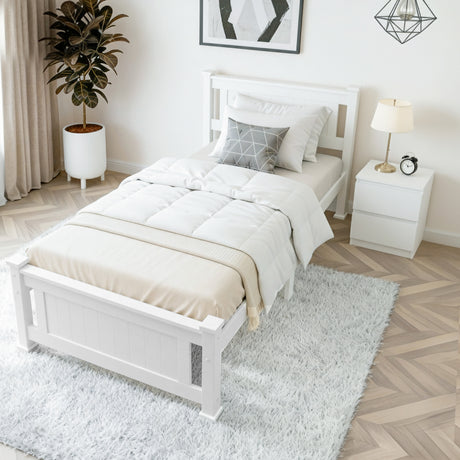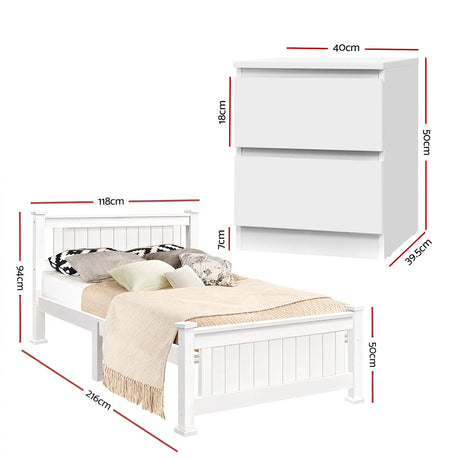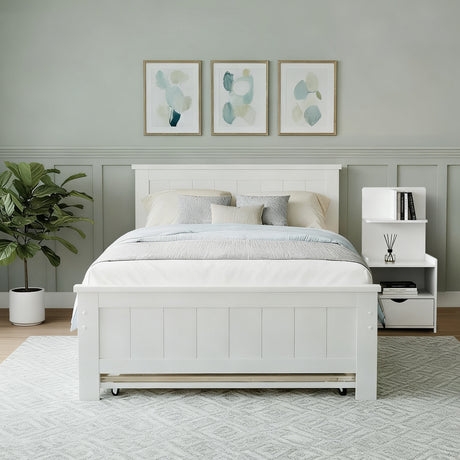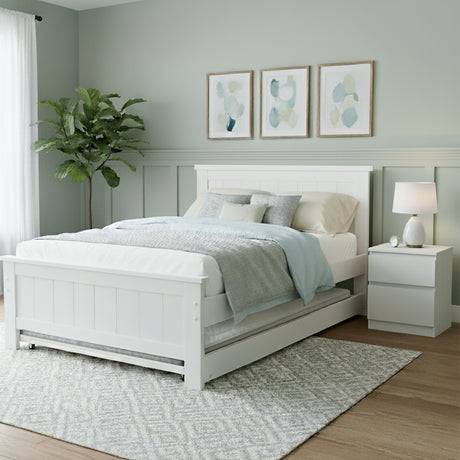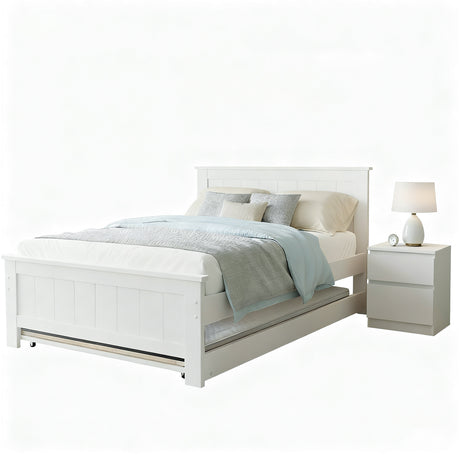- Storage Solutions: Many bedside tables come with drawers or shelves, offering additional storage space to keep your bedroom clutter-free. This extra storage can be used for stowing away books, electronics, personal care items, or any night-time essentials, keeping your space tidy and organized.
- Space Optimization: In smaller bedrooms, the compact size of bedside tables maximizes the available space. They can fit snugly next to the bed, providing utility without occupying too much floor area, making them perfect for compact living environments.
- Style Statement: Choosing the right bedside table can make a significant style statement and tie the room's décor together. Whether you prefer a minimalist design or an ornate, vintage look, the bedside table can reflect your personal style and enhance the room's ambiance.
- Symmetry and Balance: Placing bedside tables on either side of the bed can create symmetry, adding balance and proportion to the room's layout. This not only improves the room's aesthetic appeal but also promotes a sense of harmony and calmness, essential for a restful sleep environment.
- Lighting Control: With a bedside table, you can easily access lamps or light switches, allowing you to control the lighting without getting out of bed. This is particularly beneficial for those who enjoy reading before sleep or need to get up during the night.
- Tech Management: For those who use electronic devices before sleep, a bedside table can serve as a charging station, keeping your gadgets within reach yet out of the way. This convenience can also help in managing screen time before bed, contributing to better sleep hygiene.
- Multipurpose Use: Besides their traditional role, bedside tables can serve as end tables in a living room or additional storage in a home office. This adaptability makes them a valuable addition to any home, providing functionality and style wherever needed.
- Adaptability to Lifestyle Changes: As your needs and style evolve, so can the purpose and placement of your bedside table. A piece that once served as a nightstand can be repurposed into a side table in a living area, showcasing the furniture's long-term value and flexibility.
- Proportion and Scale: The bedside table should be proportionate to the bed and room size. It should be easily accessible from the bed without overpowering the space.
-
Design compatibility is a key factor when selecting bedside tables, as these pieces should complement the overall aesthetic of the bedroom and align with your personal style. Here's how to achieve harmony and enhance the room's ambiance through thoughtful selection of bedside tables:
Matching the Bed and Bedroom Aesthetic
- Style Consistency: The bedside table should match the style of the bed and the room's décor. For instance, a sleek, modern bed frame pairs well with a minimalist bedside table, while a vintage-style bed might look best with an antique or rustic nightstand.
- Material Coordination: The materials of the bedside table should complement other furniture pieces in the room. Wooden bedside tables can enhance the warmth of a room with other wooden furnishings, while metal or glass tables might suit contemporary spaces with modern materials.
Colour Scheme Integration
- Harmonious Colours: Choose bedside tables in colours that fit the bedroom’s colour scheme. This doesn’t mean everything has to match perfectly, but the colours should harmonize well. For a cohesive look, pick a bedside table in a shade that echoes one of the primary, secondary, or accent colours in the room.
- Contrasting Accents: For a bolder statement, select bedside tables that contrast with the room's colour palette. This can add visual interest and depth, making the bedside table a standout feature in the space.
Scale and Proportion
- Height Alignment: The height of the bedside table is crucial for both aesthetics and functionality. Ideally, it should be level with the mattress or slightly taller, allowing easy access to items on the table from the bed.
- Size Balance: The size of the bedside table should be in proportion to the bed and the room. A large bed in a spacious room can accommodate bigger or multiple bedside tables, while a small room with a twin bed might only need a petite, space-saving nightstand.
Thematic Continuity
- Theme Reflection: If your bedroom follows a specific theme (nautical, bohemian, industrial, etc.), the bedside tables should reflect or complement this theme. This attention to detail helps reinforce the room's overall concept and creates a more immersive environment.
- Decorative Elements: Bedside tables offer a platform to display décor that enhances the room’s theme, such as lamps, books, or art pieces. Selecting tables with the surface area and style to accommodate these items can further unify the room's design.
Personal Touch
- Individual Preferences: While design compatibility is important, personal preference should also play a significant role in the selection process. The bedside table should resonate with your personal taste and meet your individual needs, making your bedroom a personalized retreat.
- Flexibility for Changes: Consider choosing bedside tables that can adapt to future décor changes. Timeless designs or neutral colours can offer flexibility, allowing the bedside table to remain compatible with new bedding, wall colours, or décor styles over time.
In conclusion, the design compatibility of bedside tables with the rest of the bedroom is essential for creating a harmonious and inviting space. By considering style, material, colour, scale, thematic elements, and personal preferences, you can select bedside tables that enhance the room’s aesthetics and contribute to a cohesive and enjoyable bedroom environment.





















